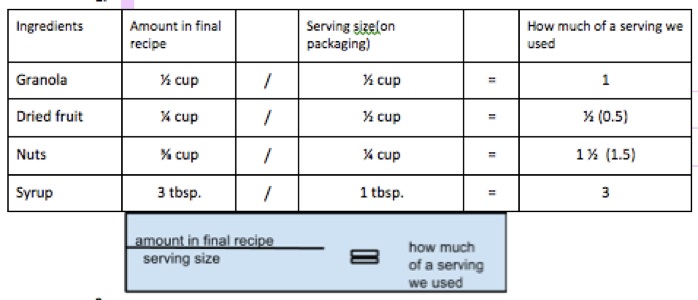
Science Cooks
Length:
2 hours
Overview:
Good nutrition is an essential part of maintaining a healthy lifestyle. Nutrients provide energy and are the building blocks our bodies need to function. Learning to make sound choices about food is an important life skill, one that can be practiced by looking at and understanding labels.
National Education Standards:
Benchmarks for Science Literacy
●6A/M1 ( Grades: 6-8 ): Like other animals, human beings have body systems for obtaining and deriving energy from food and for defense, reproduction, and the coordination of body functions.
●6C/M1 ( Grades: 6-8 ): Organs and organ systems are composed of cells and help to provide all cells with basic needs.
●6C/M2 ( Grades: 6-8 ): For the body to use food for energy and building materials, the food must first be digested into molecules that are absorbed and transported to cells.
NSTA National Science Education Standards
●C.1.5 ( Grades: 5-8 ): The human organism has systems for digestion, respiration, reproduction, circulation, excretion, movement, control, and coordination, and for protection from disease. These systems interact with one another.
******Be aware of any and all food allergies students may have*******
Materials:
Pick two from each category
●Pre Baked plain granola
●Sticky sweetener (honey, maple syrup, brown rice syrup, agave nectar, molasses, peanut butter, almond butter or sun butter)
●dried fruits: cherries, blueberries, pineapple, apricots, mangos, currants, cranberries, banana chips, coconut (if no allergies)
●nuts: almonds, macadamias, pistachios, pecans, walnuts, cashews, hazelnuts, Brazil nuts, pine nuts
●legumes: peanuts, soy nuts
●seeds: sunflower, pumpkin, flax, sesame
●others: m&m’s, chocolate chips, popcorn
●mixing bowls
●measuring cups and spoons
●stirring spoons and spatulas
●wax paper
●pencils and paper
●clipboards
●computer and/or calculators
Links:
(labels) whfoods.org/sitesearch.php and livestrong.com
kidshealth.org/kid/stay_healthy
Vocabulary:
fat, protein, vitamins, minerals, fiber, sugar, complex carbohydrates, carbohydrates, empty calories
Instruction:
1.Using nutrition labels selected by the instructor, have students make a list of all the nutrients they know. (Fat, protein, vitamins, minerals, fiber, sugar) Can they think of anything else to consider when choosing foods to eat? (calories, sodium, cholesterol) What makes a food healthy? (high protein, high fiber, contains “good fats” loaded with vitamins) How healthy are their snacks? Have students visit Fabulous food web site to investigate more about nutrients
2. After they have finished with Fabulous foods, have students go to the Figuring out food link.
3.Break students up into small groups and have them brainstorm a healthy granola bar using the ingredients provided and then create a nutrition label for it. (Provide nutrition labels for every ingredient provided). Have students come up with a name for their product.
4.Students should consult the nutrition guides to build the most nutritious bar possible. Make sure to have them highlight why their bar is the best on the “market”
5.Give each group one serving of granola and have them divide their supplies between group members to test different recipes. Before adding additional ingredients, students MUST measure and record each item.
-
6.Calculate servings for each ingredients. Students must figure out how much of a serving they used for each ingredient. ***If students are struggling with the math, try using think aloud. Ask students to explain out loud to others how they solved a problem. Think aloud are a good way to catch misunderstandings about math concepts.
7. Mix dry ingredients in the bowl and add sweetener to bind everything together. Once evenly coated, spread mixture onto wax paper. Students can make bars, balls or other creative shapes as their product sets.
8. Calculate nutritional information for each ingredient. Focus on three items on the nutritional facts label (ex. protein, fat, and carbohydrates).Students should use the table for their original recipes to start their equations.
9. To find the nutritional facts for one serving, divide the total for each nutrient by the number of servings (total number of bars, balls or shapes). Round to the nearest tenth. If students are REALLY struggleing with the math, they can visit nutritiondata.com (free login required). Use this only as a LAST resort!
10.Then allow students 10min to compile all their information and make a presentation of their product to the class. Make sure they mention why their bar is the best, Is their granola bar healthy (why/why not), What would they change if they could go back and do it again.
11. Enjoy a taste test!
12. Collect all recipes and products name and assemble to create a classroom cookbook.
References: http://www.pbslearningmedia.org/collection/scigirls/?topic_id=797
